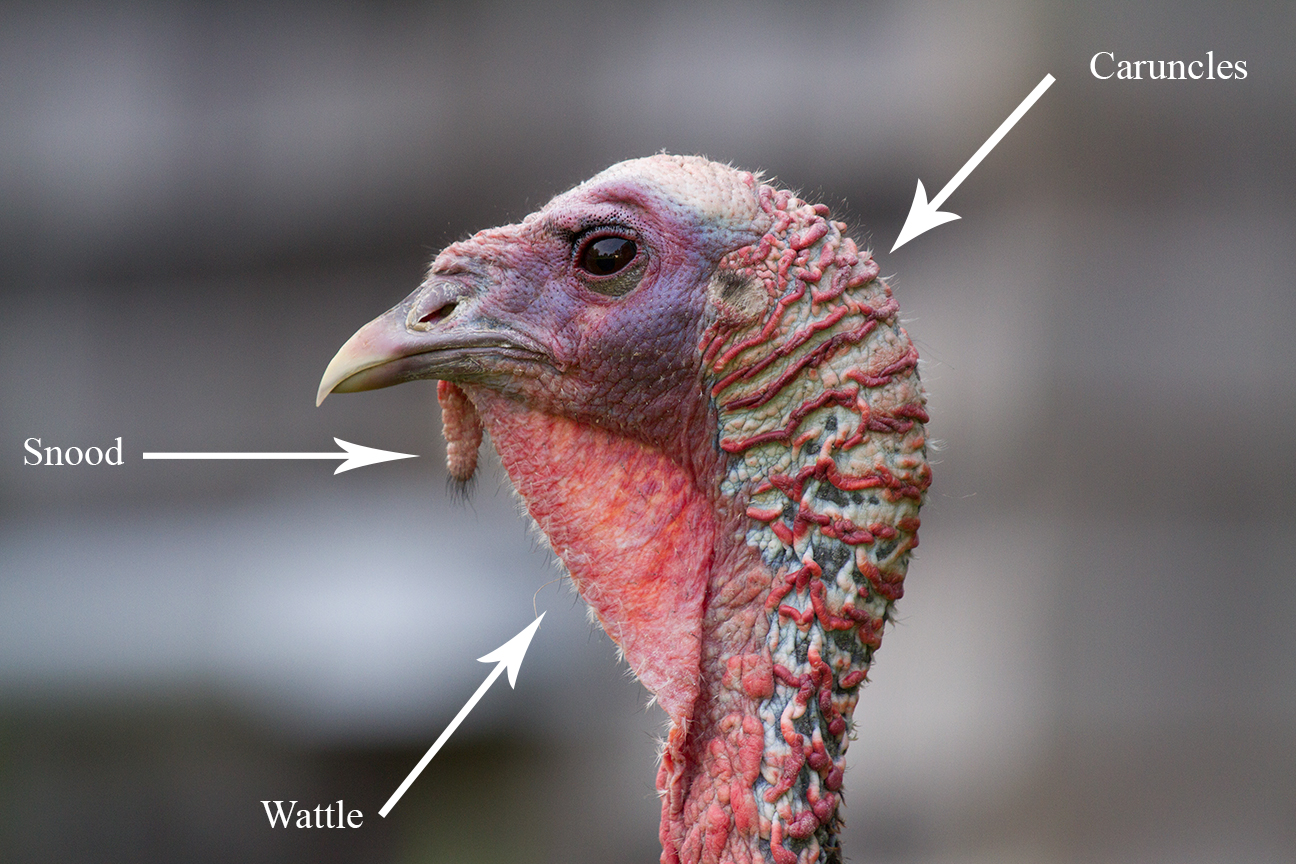|
Black (turkey)
The Norfolk Black, also known as the Black Spanish or Black Turkey, is a British breed of domestic turkey. It is thought to derive from birds taken to Britain from Spain, where they had arrived with Spanish explorers returning from the New World. It is generally considered the oldest turkey breed in the UK. History Turkeys were brought to Europe by early conquistadors returning from the New World, and were introduced to Britain – probably from Spain – in the early sixteenth century. According to the ''Chronicle of the Kings of England'' of Richard Baker of 1643, this was in the fifteenth year of the reign of Henry VIII, or about 1524. William Strickland is often credited with bringing them. Blackbirds had occasionally been seen among New World flocks of wild birds; European breeders selectively bred for this colour. In England, turkey farming was carried out mainly in East Anglia, particularly in Norfolk. In the seventeenth or eighteenth century, early colonists t ... [...More Info...] [...Related Items...] OR: [Wikipedia] [Google] [Baidu] |
National Colonial Farm
National may refer to: Common uses * Nation or country ** Nationality – a ''national'' is a person who is subject to a nation, regardless of whether the person has full rights as a citizen Places in the United States * National, Maryland, census-designated place * National, Nevada, ghost town * National, Utah, ghost town * National, West Virginia, unincorporated community Commerce * National (brand), a brand name of electronic goods from Panasonic * National Benzole (or simply known as National), former petrol station chain in the UK, merged with BP * National Book Store, a bookstore and office supplies chain in the Philippines * National Car Rental, an American rental car company * National Energy Systems, a former name of Eco Marine Power * National Entertainment Commission, a former name of the Media Rating Council * National Motor Vehicle Company, Indianapolis, Indiana, USA 1900–1924 * National Radio Company, Malden, Massachusetts, USA 1914–1991 * National Supermarket ... [...More Info...] [...Related Items...] OR: [Wikipedia] [Google] [Baidu] |
Meleagris Gallopavo Silvestris
The wild turkey (''Meleagris gallopavo'') is an upland game bird native to North America, one of two extant species of turkey and the heaviest member of the order Galliformes. It is the ancestor to the domestic turkey (''M. g. domesticus''), which was originally derived from a southern Mexican subspecies of wild turkey (not the related ocellated turkey). Taxonomy The wild turkey was formally described in 1758 by the Swedish naturalist Carl Linnaeus in the tenth edition of his ''Systema Naturae'' under its current binomial name ''Meleagris gallopavo''. The type locality is Mexico. The genus name ''Meleagris'' is from Ancient Greek μελεαγρις/''meleagris'' meaning "guineafowl". The specific epithet ''gallopavo'' is a late Medieval Latin word for a wild turkey: it combines Latin ''gallus'' meaning "fowl" and ''pavo'' meaning "peacock". The word was used in 1555 by the Swiss naturalist Conrad Gessner in his ''Historiae animalium''. Six subspecies are recognised: * ''Meleag ... [...More Info...] [...Related Items...] OR: [Wikipedia] [Google] [Baidu] |
American Poultry Association
The American Poultry Association (APA) is the oldest poultry organization in North America. It was founded in 1873, and incorporated in Indiana in 1932. The first American poultry show was held in 1849, and the APA was later formed in response to the burgeoning need for an overseeing body to set standards for poultry breeds and to administer judging. A year after its foundation, the Association published the first '' American Standard of Perfection'', which to this day is the most widely used and respected handbook on poultry breed standards. The APA continues to publish and expand the ''Standard'', and aims to promote all aspects of poultry fancy by certifying official judges, sponsoring shows, fostering youth participation, and advocating for its members, in both the U.S. and Canada. The Poultry Standard of Perfection Once the APA was formed in 1873, they made it their first order of business to create a standard for American poultry breeds. Six members from the original m ... [...More Info...] [...Related Items...] OR: [Wikipedia] [Google] [Baidu] |
Piscataway Park
Piscataway Park is a National Park Service-protected area located southwest of downtown Washington, D.C. in and around Accokeek, Maryland. It protects the National Colonial Farm, Marshall Hall, and the Accokeek Creek Site. The park is located across the Potomac River from George Washington's Mount Vernon estate. Piscataway Park is named after Piscataway Creek, itself named for a Native American tribe. The park is home to bald eagles, beavers, osprey, and other wildlife and encompasses areas of wetland, meadow and woodland. It is administered by the National Park Service and is managed by National Capital Parks-East. History Henry and Alice Ferguson bought more than of land in the area in 1928. It includes the area of Moyaone, a Native American Piscataway village last occupied in 1623. The Fergusons bought more property and encouraged friends to settle nearby, where they could protect the environment. After Alice's death in 1951, Ferguson created the Alice Ferguson F ... [...More Info...] [...Related Items...] OR: [Wikipedia] [Google] [Baidu] |
Tidewater (region)
Tidewater is a region in the Atlantic Plain, Atlantic Plains of the United States located east of the Atlantic Seaboard Fall Line, Atlantic Seaboard fall line (the natural border where the tidewater meets with the Piedmont region) and north of the Deep South. The term "tidewater" can be applied to any region where water levels are affected by the tide. Still, culturally and historically, the Tidewater region refers most commonly to the low-lying plains of southeastern Virginia (known as the coastal plain or Tidewater Virginia), eastern Maryland, the Eastern Shore of Virginia, Eastern Shore, and the Chesapeake Bay. It can also encompass Delaware, the remainder of the Delmarva Peninsula, and Northeastern North Carolina. The cultural Tidewater region got its name from the effects of changing ocean tides on local River, rivers, Sound (geography), sounds, and shorelines. The area has a centuries-old cultural heritage that sets itself apart from the adjacent inland parts of the United ... [...More Info...] [...Related Items...] OR: [Wikipedia] [Google] [Baidu] |
Potomac River
The Potomac River () is in the Mid-Atlantic (United States), Mid-Atlantic region of the United States and flows from the Potomac Highlands in West Virginia to Chesapeake Bay in Maryland. It is long,U.S. Geological Survey. National Hydrography Dataset high-resolution flowline dataThe National Map. Retrieved August 15, 2011 with a Drainage basin, drainage area of , and is the fourth-largest river along the East Coast of the United States. More than 6 million people live within its drainage basin, watershed. The river forms part of the borders between Maryland and Washington, D.C., on the left descending bank, and West Virginia and Virginia on the right descending bank. Except for a small portion of its headwaters in West Virginia, the #North Branch Potomac River, North Branch Potomac River is considered part of Maryland to the low-water mark on the opposite bank. The South Branch Potomac River lies completely within the state of West Virginia except for its headwaters, which lie i ... [...More Info...] [...Related Items...] OR: [Wikipedia] [Google] [Baidu] |
Ark Of Taste
The Ark of Taste is an international catalogue of endangered heritage foods which is maintained by the global Slow Food movement. The Ark is designed to preserve at-risk foods that are sustainably produced, unique in taste, and part of a distinct ecoregion. Contrary to the most literal definition of plant and animal conservation, the Ark of Taste aims to maintain edibles in its purview by actively encouraging their cultivation for consumption. By doing so, Slow Food hopes to promote the growing and eating of foods which are sustainable and preserve biodiversity in the human food chain. The list is intended to include foods which are rare, and are "culturally or historically linked to a specific region, locality, ethnicity or traditional production practice". Which foods meet these criteria is decided by an adjudicating committee made up of members of the Slow Food nonprofit organization; all candidates go through a formal nomination process which includes tastings and identific ... [...More Info...] [...Related Items...] OR: [Wikipedia] [Google] [Baidu] |
American Livestock Breeds Conservancy
The Livestock Conservancy, formerly known as the American Livestock Breeds Conservancy (ALBC) and prior to that, the American Minor Breeds Conservancy, is a nonprofit organization focused on preserving and promoting rare breeds, also known as "heritage breeds" of livestock. Founded in 1977, through the efforts of livestock breed enthusiasts concerned about the disappearance of many of the US's heritage livestock breeds, The Livestock Conservancy was the pioneer livestock preservation organization in the United States, and remains a leading organization in that field. It has initiated programs that have saved multiple breeds from extinction, and works closely with similar organizations in other countries, including Rare Breeds Canada. With 3,000 members, a staff of eleven and a 19-member board of directors, the organization has an operating budget of over a million dollars. The Livestock Conservancy maintains a conservation priority list that divides endangered breeds of horses ... [...More Info...] [...Related Items...] OR: [Wikipedia] [Google] [Baidu] |
Heritage Turkey
A heritage turkey is one of a variety of strains of domestic turkey which retains historic characteristics that are no longer present in the majority of turkeys raised for consumption since the mid-20th century. Heritage turkeys can be differentiated from other domestic turkeys in that they are biologically capable of being raised in a manner that more closely matches the natural behavior and life cycle of wild turkeys. Heritage turkeys have a relatively long lifespan and a much slower growth rate than turkeys bred for industrial agriculture, and unlike industrially bred turkeys, can reproduce without artificial insemination. More than ten different turkey breeds are classified as heritage turkeys, including the Auburn, Buff, Black, Bourbon Red, Narragansett, Royal Palm, Slate, Standard Bronze, Pied, Harvey Speckled and Midget White. Some prominent chefs, farmers, and food critics have also contended that heritage turkey meat tastes better and is more healthful. Despite in ... [...More Info...] [...Related Items...] OR: [Wikipedia] [Google] [Baidu] |
Broad Breasted White
The Broad Breasted White is commercially the most widely used breed of domesticated turkey. These birds have shorter breast bones and larger breasts, sometimes rendering them unable to breed without human assistance (typically via artificial insemination). They produce more breast meat and their pin feathers are less visible when the carcass is dressed due to their white color. These properties have made the breed popular in commercial turkey production but enthusiasts of slow food argue that the development of this breed and the methods in commercial turkey production have come at a cost of less flavor. The Broad Breasted White has been the dominant breed of turkey for food production since the 1960s, having superseded the Broad Breasted Bronze (from which it was bred by cross-breeding with the White Holland) in industrial settings and the Beltsville Small White for home cooking. These birds are grown in large, fully automated grow-out barns, which may house as many as 10,0 ... [...More Info...] [...Related Items...] OR: [Wikipedia] [Google] [Baidu] |





